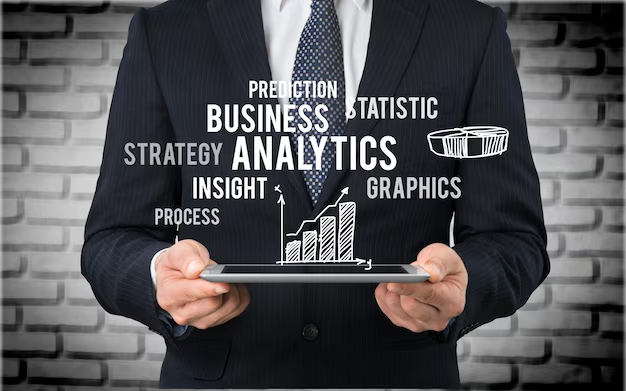In today’s data-driven world, businesses are increasingly relying on business analytics to make informed decisions, streamline operations, and drive growth. Business analytics involves the use of data analysis tools, techniques, and methodologies to understand business performance, predict future trends, and make strategic decisions. By leveraging insights from data, companies can enhance operational efficiency, improve customer experiences, and ultimately boost profitability.
What Is Business Analytics?
Business analytics refers to the practice of using quantitative data to gain insights into business performance and make decisions that improve outcomes. It involves the collection, analysis, and interpretation of business data, often with the help of software tools like data visualization, predictive analytics, and big data technologies.
Key types of business analytics include:
- Descriptive Analytics: Analyzes historical data to understand past performance.
- Diagnostic Analytics: Investigates reasons behind past outcomes.
- Predictive Analytics: Uses historical data to predict future trends.
- Prescriptive Analytics: Provides recommendations for action based on data insights.
How Business Analytics Drives Growth and Profit
1. Enhances Decision-Making
One of the most significant ways business analytics impacts growth and profit is by improving decision-making. Informed decisions based on real-time data analysis help businesses:
- Identify profitable opportunities.
- Optimize resource allocation.
- Minimize risks associated with market fluctuations or customer preferences.
For example, predictive analytics can forecast future demand, allowing businesses to adjust inventory levels and avoid stockouts or overstocking, which ultimately enhances profitability.
2. Optimizes Marketing Strategies
Marketing campaigns can be more effective when guided by data-driven insights. Business analytics enables businesses to:
- Identify target audiences: By analyzing customer data, businesses can understand their ideal customers and segment them for targeted campaigns.
- Personalize offers: Use customer behavior data to personalize emails, promotions, and product recommendations.
- Track campaign performance: Measure the success of marketing efforts through key performance indicators (KPIs), helping businesses refine strategies for better results.
By using data analytics, companies can allocate marketing budgets more effectively, ensuring higher ROI and driving customer acquisition and retention.
3. Improves Operational Efficiency
Business analytics can streamline internal processes, leading to better resource management and cost savings:
- Supply Chain Optimization: Analytics helps businesses forecast demand, optimize inventory levels, and reduce operational costs associated with supply chain inefficiencies.
- Process Automation: Data analysis identifies areas where automation can improve efficiency, such as automating repetitive tasks, minimizing human error, and speeding up operations.
- Cost Reduction: By analyzing financial and operational data, businesses can identify areas where costs can be cut, such as waste, excess spending, or underutilized resources.
These optimizations lead to smoother operations, which improve margins and, ultimately, profits.
4. Enhances Customer Insights
Understanding customer needs and behaviors is critical for growth. Business analytics helps:
- Analyze customer feedback: Collecting and analyzing customer feedback and survey data can guide improvements in products or services.
- Customer Lifetime Value (CLV): Analytics can calculate the long-term value of a customer, allowing businesses to focus on high-value clients and increase retention rates.
- Churn Prediction: By analyzing past behavior, businesses can identify customers likely to churn and take preventive actions, such as offering discounts or personalized promotions.
By better understanding and anticipating customer needs, businesses can improve loyalty, increase repeat sales, and drive growth.
5. Facilitates Innovation and Competitive Advantage

Business analytics provides valuable insights that can spark innovation:
- Market Trends: Analytics can identify emerging trends, allowing businesses to develop new products or services that meet customer demand.
- Competitive Benchmarking: By analyzing competitor data, businesses can understand their competitive position, adapt to industry changes, and implement strategies to gain a competitive edge.
- Risk Management: Predictive analytics can help identify potential risks before they become serious issues, allowing businesses to proactively mitigate risks.
By continuously innovating and adapting based on data insights, businesses can stay ahead of competitors and maintain long-term profitability.
6. Enables Data-Driven Forecasting
Effective forecasting is essential for business growth. Business analytics enables:
- Sales Forecasting: By analyzing past sales data, businesses can predict future sales and demand, which aids in budgeting and resource allocation.
- Financial Forecasting: Accurate financial forecasts help businesses plan for the future, manage cash flow, and ensure profitability.
- Market Expansion: Analytics can help businesses identify new markets or customer segments with high growth potential, guiding expansion efforts and strategic investments.
Accurate forecasting reduces uncertainties and helps businesses plan for sustained growth and profitability.
Real-Life Examples of Business Analytics Driving Growth
- Amazon: Amazon uses predictive analytics to forecast demand for products, optimize inventory levels, and recommend products to customers based on browsing behavior, leading to increased sales and customer satisfaction.
- Netflix: Netflix employs data analytics to recommend shows and movies based on users’ viewing habits. This personalized experience helps boost user engagement, retention, and ultimately revenue.
- Coca-Cola: Coca-Cola uses data analytics to understand consumer preferences and optimize supply chain operations, reducing costs and improving delivery times.
Conclusion
Business analytics is a game-changer for organizations looking to drive growth and profitability. By providing valuable insights into customer behavior, operational efficiency, marketing effectiveness, and market trends, businesses can make smarter decisions, reduce costs, and enhance customer experiences. Leveraging analytics tools and techniques can empower businesses to stay competitive, adapt to changes, and continuously innovate, leading to long-term success and growth.
FAQs
1. How can business analytics help small businesses?
Business analytics helps small businesses make data-driven decisions, optimize operations, and improve marketing efforts, making it possible to compete with larger organizations even on a smaller budget.
2. What are some common tools used for business analytics?
Common business analytics tools include Google Analytics, Tableau, Power BI, SAS Analytics, and SPSS. These tools help collect, visualize, and analyze data to make informed decisions.
3. How does business analytics improve customer experience?
By analyzing customer data, businesses can personalize experiences, predict needs, offer tailored promotions, and proactively address concerns, resulting in higher satisfaction and loyalty.
4. What is predictive analytics, and how does it work?
Predictive analytics uses historical data, statistical algorithms, and machine learning to forecast future trends, such as customer behavior, market demand, or sales performance.
5. Can business analytics help in risk management?
Yes, business analytics can identify potential risks by analyzing data patterns, helping businesses take proactive measures to mitigate risks related to market fluctuations, financial losses, or operational inefficiencies.


